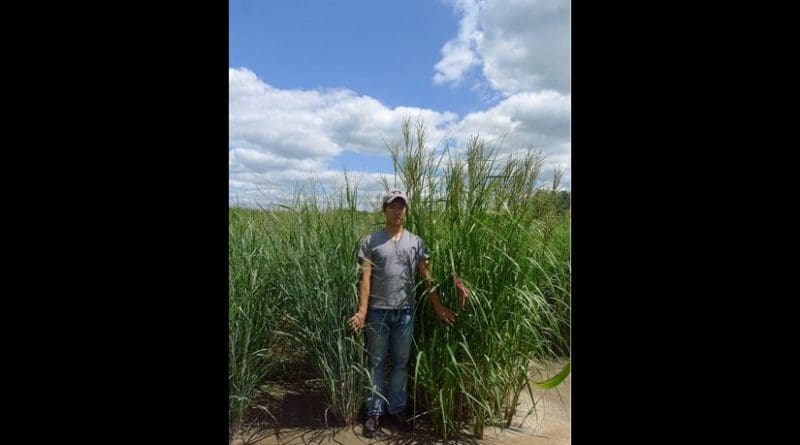Biofuel Producers With Poor Soil Should Consider Prairie Cordgrass
Most prime agricultural land is used to produce food crops, leaving biofuel producers to establish crops on marginal land. The soil on marginal land is often salty, making crop production difficult. But University of Illinois researchers have found several varieties of perennial grasses that can withstand high salt concentrations.
“We evaluated germination and plant growth for prairie cordgrass accessions and switchgrass cultivars in a greenhouse study,” said crop scientist D.K. Lee.
In crop production, too much salt in the soil can interfere with the plant’s ability to absorb water. Water moves into plant roots by osmosis, and when solutes inside root cells are more concentrated than in soil, water moves into the root. In salt-affected soil, the difference in solute concentration inside and outside of the root is not as great, meaning that water may not move in. So, even where soil is moist, plants experience drought-like conditions when too much salt is present.
Certain mineral salts are also toxic to plants. When they are taken up along with soil water, plant tissue damage can occur.
“Saline soils are characterized by high concentrations of soluble salts, such as sodium, chloride, calcium chloride, or magnesium sulfate, whereas sodic soils are solely characterized by their high sodium concentrations,” Lee said. “Many soils are both saline and sodic.”
The researchers subjected six prairie cordgrass accessions and three switchgrass cultivars to different levels of sodicity and salinity over two years of growth. The team conducted a similar experiment in an earlier study, but only looked at one cordgrass (‘Red River’) and one switchgrass (‘Cave-In-Rock’) cultivar, over only one growing season.
“In that study, we found that ‘Cave-In-Rock’ switchgrass was not good at all in terms of salt tolerance. ‘Red River’ cordgrass was far superior,” Lee recalled.
The expanded study showed that prairie cordgrass had, on average, much higher germination rates than switchgrass in saline and sodic conditions. Dry biomass production was not as clearly split between the two species in salty conditions, however.
Three prairie cordgrasses, pc17-102, pc17-109, and ‘Red River’, and one switchgrass, EG-1102, produced equivalent amounts of dry biomass when subjected to high-salt conditions. However, they produced approximately 70 to 80 percent less biomass in salty conditions than they did with no added salt. In contrast, the salt-susceptible switchgrass cultivar, EG-2012, produced approximately 99.5 percent less biomass in high-salt treatments than it did without added salt.
The next step for the researchers is to bring this work out of the greenhouse, where climate is controlled and water is unlimited, to real-world scenarios. Preliminary field research has shown that prairie cordgrass is very successful in salt-affected areas in Illinois and South Dakota.
“Even in highly saline soils, prairie cordgrass can do very well. Unlike switchgrass, it can take up salt dissolved in water without getting sick because it can excrete it out through specialized salt glands. Then, once the plants grow deep roots, they can access less salty water,” Lee said.
More research and agronomic improvements are needed before prairie cordgrass can be recommended widely as a biomass crop, but Lee sees a lot of potential in this species.
“Prairie cordgrass is an interesting species,” he said. “As a warm season grass, I think it is unique in being able to handle low temperatures, and it is also well adapted to poorly drained soils and lands with frequent flooding. And even in high-salt conditions in the field, we’re getting pretty good yields: up to 8 or 9 tons per acre.”
The article, “Determining effects of sodicity and salinity on switchgrass and prairie cordgrass germination and plant growth,” is published in Industrial Crops and Products. Lee’s co-authors, Eric Anderson, Tom Voigt, and Sumin Kim are also from the U of I. The project was funded by the Energy Biosciences Institute.

